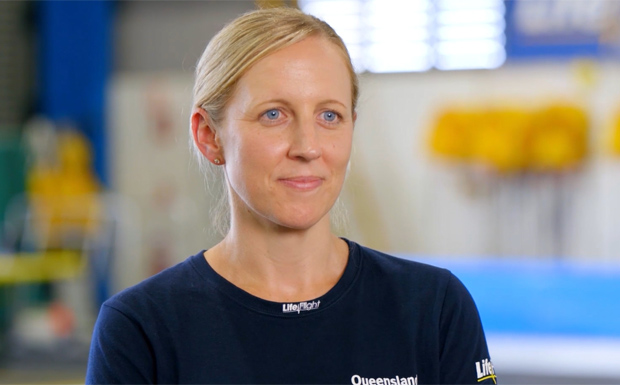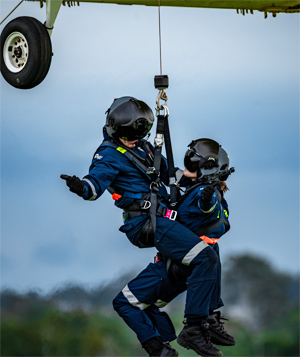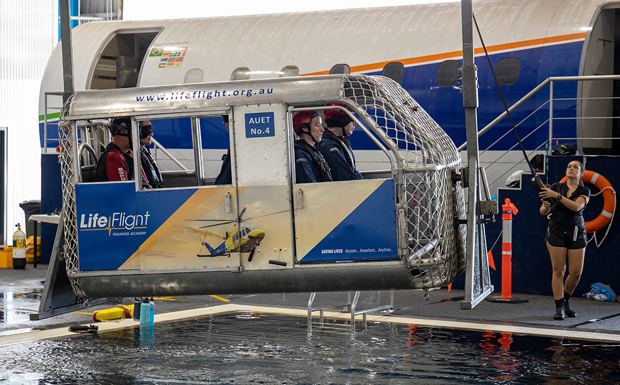
(Photo: RACQ LifeFlight)
February 6, 2020
A new Critical Care Doctor is starting work with RACQ LifeFlight Rescue in Toowoomba, almost 20 years after the helicopter service helped save her sister’s life.
Dr Sarah Louden said her younger sibling was critically injured when she fell 10-15 metres.
“The helicopter just happened to be in the air already, when they were tasked,” Dr Louden said.
“About 10 minutes later they landed, packaged her up and got her quickly down to the Princess Alexandra Hospital in Brisbane, where she had emergency surgery for many hours overnight.
“They were really instrumental in saving her life, so I am eternally grateful.”
Dr Sarah Louden, a registrar at Toowoomba Hospital’s Emergency Department, said she never imagined she would end up becoming a member of a crew flying to people’s rescue.
“It’s pretty amazing to now be able to come and work for the same organisation that saved her life,” she said.
* * *

Dr Louden is one of four new retrieval registrars who will be taking off from Toowoomba’s Clive Berghofer LifeFlight Centre.
They joined 24 other medical recruits who will be starting at other aeromedical bases around Queensland for an intensive week of training, including how to winch patients.
“For a lot of them it is very fun, but it is very stressful. They’re underneath a helicopter, they’re hanging off a wire cable. So we just need to calm them down and help them follow the procedures they’ve been given,” RACQ LifeFlight Rescue Chief Aircrew Officer Simon Gray said.
The recruits also have to learn how to safely make their way out of a helicopter … underwater.
“When we get them for Helicopter Underwater Escape Training (HUET) and the Emergency Breathing System component they’re sort of all a bit nervous about it, which is to be expected,” HUET manager Mick Dowling said.
“It is daunting. They’re strapped in a seatbelt, in a machine that’s going upside down in the water, so we try to make them feel comfortable before going in.
“The process is very easy to do, they’re not going to be underwater for long, it’s about 20 seconds maximum and we’ve got safety divers there, as well as a lot of support staff making sure they’re okay.”
The trainees underwent theory training and dry runs before they were first dunked underwater in the specially designed training cage.
As their confidence built, they went through five more increasingly challenging scenarios including being turned upside down and blindfolded.
The instructors also took them through sea survival skills, such as how to use lifejackets and rafts.
Their skills were then put to the test in a series of high-pressure scenarios, staged at the Queensland Fire and Emergency Service Whyte Island training facility.
The mock emergencies included a car crash, a wild house party where a child became seriously unwell and an incident where someone had fallen in a ship’s engine room.
The scenes were brought to life with actors, costumes, props and sound effects to make them as realistic as possible.
The majority of the doctors’ work is performed on behalf of Queensland Health, which committed $235 million to a 10-year service agreement between LifeFlight and the State Government to provide Critical Care Doctors across the State in August last year.

























